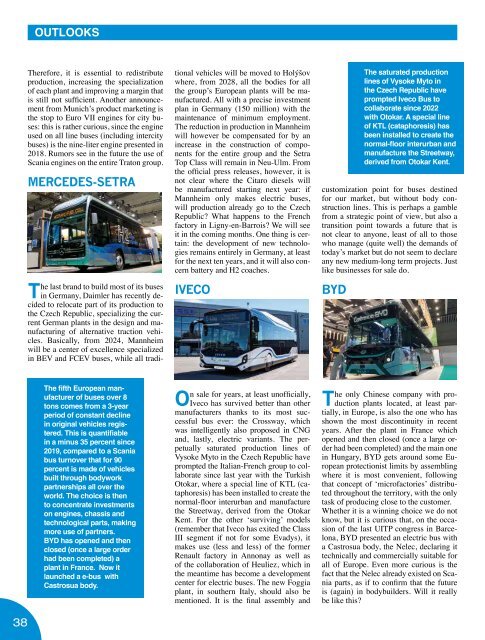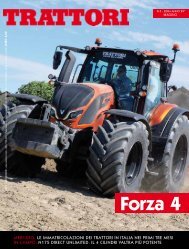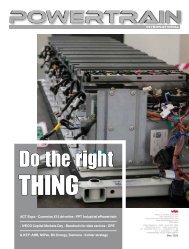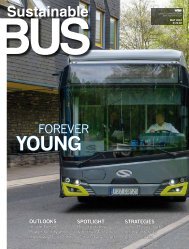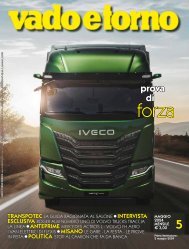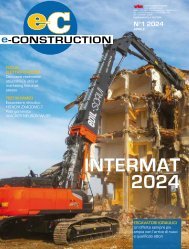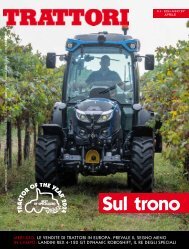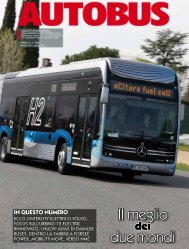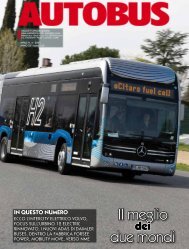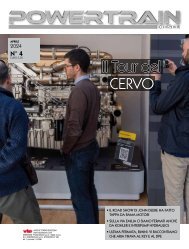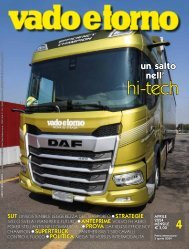2023-09 SUSTAINABLE BUS
A new issue of Sustainable Bus is out today. In this upcoming edition, we’ve curated a diverse and comprehensive range of topics that spotlight the latest developments in the world of sustainable mobility. From cutting-edge technological advancements to market insights and industry transformations, this issue promises to be a captivating exploration of the future of public transportation. What you could fine inside? Well, a market insight will offer you a detailed look at the European e-bus market, providing you with a comprehensive understanding of the mid-2023 results. The leading e-bus market in Europe is still UK: therefore, we focused our attention on that specific market with a report that sums up strategies, focus, goals of the most prominent industry players. A technology spotlight on the delicate topic of batteries, authored by Claudius Jehle, look at battery management and strategies to ensure the smooth and cost-effective operation of electric buses (with a focus on a case study from BVG). Among the pillars of our upcoming issue you’ll find a detailed journey around the European industrial bus&coach landscape. Goal? Providing our readers insights into the changing dynamics among key OEMs in the region. We’ll be then taking you behind the scenes at the Yutong factory in Zhengzhou, that we had the pleasure of visiting in June. Let’s then delve into Iveco Bus’s growing efforts in the zero-emission bus field. Finally, last but not least, a nearly-20-pages comparison between seven 12-meter battery-electric buses, gathered together in Bonn also this year by the German magazine Omnibusspiegel. You’ll find both established players and newcomers side by side: Ebusco 3.0, Hess lighTram 12m, Ikarus 120e, Iveco E-Way, Mercedes eCitaro with new batteries, Otokar e-Kent C, Quantron Cizaris 12 Ev.
A new issue of Sustainable Bus is out today. In this upcoming edition, we’ve curated a diverse and comprehensive range of topics that spotlight the latest developments in the world of sustainable mobility. From cutting-edge technological advancements to market insights and industry transformations, this issue promises to be a captivating exploration of the future of public transportation.
What you could fine inside? Well, a market insight will offer you a detailed look at the European e-bus market, providing you with a comprehensive understanding of the mid-2023 results. The leading e-bus market in Europe is still UK: therefore, we focused our attention on that specific market with a report that sums up strategies, focus, goals of the most prominent industry players.
A technology spotlight on the delicate topic of batteries, authored by Claudius Jehle, look at battery management and strategies to ensure the smooth and cost-effective operation of electric buses (with a focus on a case study from BVG).
Among the pillars of our upcoming issue you’ll find a detailed journey around the European industrial bus&coach landscape. Goal? Providing our readers insights into the changing dynamics among key OEMs in the region.
We’ll be then taking you behind the scenes at the Yutong factory in Zhengzhou, that we had the pleasure of visiting in June. Let’s then delve into Iveco Bus’s growing efforts in the zero-emission bus field.
Finally, last but not least, a nearly-20-pages comparison between seven 12-meter battery-electric buses, gathered together in Bonn also this year by the German magazine Omnibusspiegel. You’ll find both established players and newcomers side by side: Ebusco 3.0, Hess lighTram 12m, Ikarus 120e, Iveco E-Way, Mercedes eCitaro with new batteries, Otokar e-Kent C, Quantron Cizaris 12 Ev.
Create successful ePaper yourself
Turn your PDF publications into a flip-book with our unique Google optimized e-Paper software.
OUTLOOKS<br />
Therefore, it is essential to redistribute<br />
production, increasing the specialization<br />
of each plant and improving a margin that<br />
is still not sufficient. Another announcement<br />
from Munich’s product marketing is<br />
the stop to Euro VII engines for city buses:<br />
this is rather curious, since the engine<br />
used on all line buses (including intercity<br />
buses) is the nine-liter engine presented in<br />
2018. Rumors see in the future the use of<br />
Scania engines on the entire Traton group.<br />
MERCEDES-SETRA<br />
The last brand to build most of its buses<br />
in Germany, Daimler has recently decided<br />
to relocate part of its production to<br />
the Czech Republic, specializing the current<br />
German plants in the design and manufacturing<br />
of alternative traction vehicles.<br />
Basically, from 2024, Mannheim<br />
will be a center of excellence specialized<br />
in BEV and FCEV buses, while all tradi-<br />
tional vehicles will be moved to Holýšov<br />
where, from 2028, all the bodies for all<br />
the group’s European plants will be manufactured.<br />
All with a precise investment<br />
plan in Germany (150 million) with the<br />
maintenance of minimum employment.<br />
The reduction in production in Mannheim<br />
will however be compensated for by an<br />
increase in the construction of components<br />
for the entire group and the Setra<br />
Top Class will remain in Neu-Ulm. From<br />
the official press releases, however, it is<br />
not clear where the Citaro diesels will<br />
be manufactured starting next year: if<br />
Mannheim only makes electric buses,<br />
will production already go to the Czech<br />
Republic? What happens to the French<br />
factory in Ligny-en-Barrois? We will see<br />
it in the coming months. One thing is certain:<br />
the development of new technologies<br />
remains entirely in Germany, at least<br />
for the next ten years, and it will also concern<br />
battery and H2 coaches.<br />
IVECO<br />
customization point for buses destined<br />
for our market, but without body construction<br />
lines. This is perhaps a gamble<br />
from a strategic point of view, but also a<br />
transition point towards a future that is<br />
not clear to anyone, least of all to those<br />
who manage (quite well) the demands of<br />
today’s market but do not seem to declare<br />
any new medium-long term projects. Just<br />
like businesses for sale do.<br />
BYD<br />
The saturated production<br />
lines of Vysoke Myto in<br />
the Czech Republic have<br />
prompted Iveco Bus to<br />
collaborate since 2022<br />
with Otokar. A special line<br />
of KTL (cataphoresis) has<br />
been installed to create the<br />
normal-floor interurban and<br />
manufacture the Streetway,<br />
derived from Otokar Kent.<br />
The fifth European manufacturer<br />
of buses over 8<br />
tons comes from a 3-year<br />
period of constant decline<br />
in original vehicles registered.<br />
This is quantifiable<br />
in a minus 35 percent since<br />
2019, compared to a Scania<br />
bus turnover that for 90<br />
percent is made of vehicles<br />
built through bodywork<br />
partnerships all over the<br />
world. The choice is then<br />
to concentrate investments<br />
on engines, chassis and<br />
technological parts, making<br />
more use of partners.<br />
BYD has opened and then<br />
closed (once a large order<br />
had been completed) a<br />
plant in France. Now it<br />
launched a e-bus with<br />
Castrosua body.<br />
On sale for years, at least unofficially,<br />
Iveco has survived better than other<br />
manufacturers thanks to its most successful<br />
bus ever: the Crossway, which<br />
was intelligently also proposed in CNG<br />
and, lastly, electric variants. The perpetually<br />
saturated production lines of<br />
Vysoke Myto in the Czech Republic have<br />
prompted the Italian-French group to collaborate<br />
since last year with the Turkish<br />
Otokar, where a special line of KTL (cataphoresis)<br />
has been installed to create the<br />
normal-floor interurban and manufacture<br />
the Streetway, derived from the Otokar<br />
Kent. For the other ‘surviving’ models<br />
(remember that Iveco has exited the Class<br />
III segment if not for some Evadys), it<br />
makes use (less and less) of the former<br />
Renault factory in Annonay as well as<br />
of the collaboration of Heuliez, which in<br />
the meantime has become a development<br />
center for electric buses. The new Foggia<br />
plant, in southern Italy, should also be<br />
mentioned. It is the final assembly and<br />
The only Chinese company with production<br />
plants located, at least partially,<br />
in Europe, is also the one who has<br />
shown the most discontinuity in recent<br />
years. After the plant in France which<br />
opened and then closed (once a large order<br />
had been completed) and the main one<br />
in Hungary, BYD gets around some European<br />
protectionist limits by assembling<br />
where it is most convenient, following<br />
that concept of ‘microfactories’ distributed<br />
throughout the territory, with the only<br />
task of producing close to the customer.<br />
Whether it is a winning choice we do not<br />
know, but it is curious that, on the occasion<br />
of the last UITP congress in Barcelona,<br />
BYD presented an electric bus with<br />
a Castrosua body, the Nelec, declaring it<br />
technically and commercially suitable for<br />
all of Europe. Even more curious is the<br />
fact that the Nelec already existed on Scania<br />
parts, as if to confirm that the future<br />
is (again) in bodybuilders. Will it really<br />
be like this?<br />
eDAILY Minibus<br />
Free a new energy<br />
. JUST ELECTRIC<br />
100% Connected & Assisted<br />
- Advanced and smart assistance systems<br />
- Tailor-made Maintenance & Repair offer<br />
Sustainable & Energetic<br />
- Zero emission and battery capacity<br />
up to 111 kWh<br />
- Optimized operational-costs<br />
Versatile & Flexible<br />
- Compact solution for short lines<br />
with low passengers’ capacity missions<br />
Strong & Powerful<br />
- Unique body-on-frame chassis<br />
- 140 kW motor with Hi Power boost<br />
and Eco mode<br />
38


